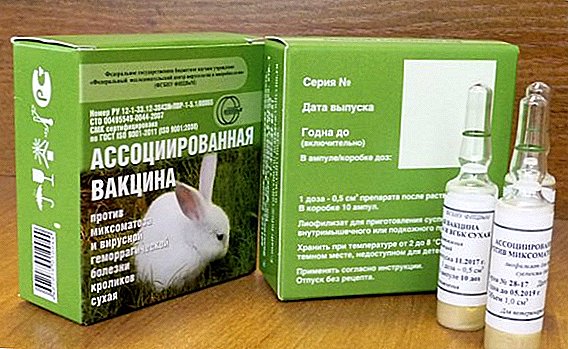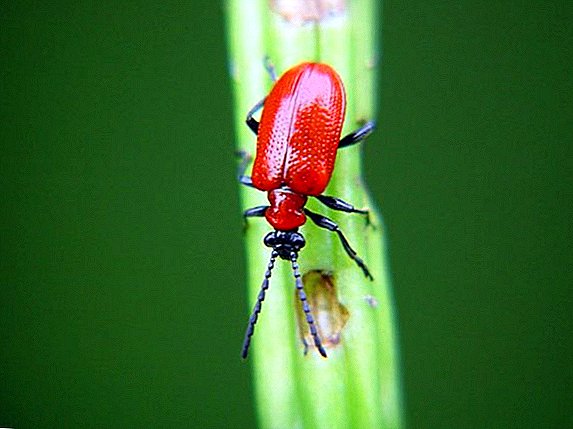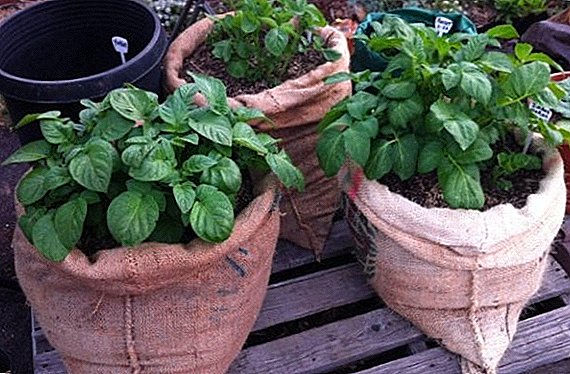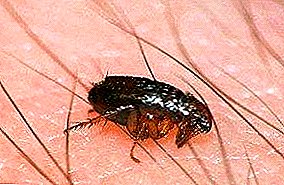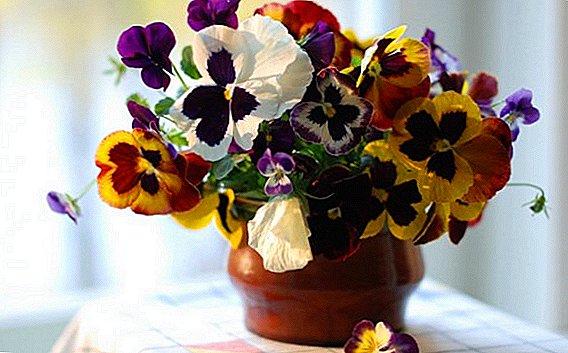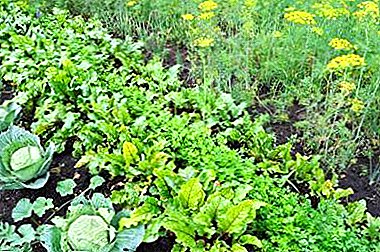
Parsley is a popular plant of the umbrella family. There are many varieties of parsley and two main varieties: leaf and root. This spicy plant is unpretentious in the care and is found in almost any garden.
Nevertheless, for a good harvest, it is important to know the characteristics of parsley and its compatibility with other plants. After that, you can plant vegetables, including next year, as well as what is permissible to grow in place of the root and leafy greens. This and much more, you will learn from our article.
Why is it important to respect the compatibility of vegetable crops?
Cultures that grow alongside influence each other, helping or hindering growth. Compatible plants protect neighbors from pests, enrich the soil with mutually beneficial substances. Joint planting of friendly crops allows for rational use of the garden area, to grow a larger number of different vegetables in one area and improve their quality.
What are the consequences?
Incompatible cultures suppress and inhibit the development of each other. They compete for water, food and sunlight, contribute to the appearance of diseases and pests. This leads to depletion of the soil, reduced quality and taste of vegetables, and their yield.
Features of the plant
 Parsley refers to biennial plants. In the first year, foliage and root develop. In the second year, all the power goes to the development of shoots with flower stalks and seed ripening.
Parsley refers to biennial plants. In the first year, foliage and root develop. In the second year, all the power goes to the development of shoots with flower stalks and seed ripening.
Spice grows best with sufficient light, in loose fertilized soil, likes good, but not excessive watering. Leaf and root parsley have their own characteristics. The leaf parsley root is thin and strongly branched. What is the difference between root parsley? A fleshy cone-shaped root, it is more demanding on moisture and soil nutrition.
What next can you plant in the open field?
- Garlic, onions. These plants saturate the soil with beneficial substances, after which they kill pathogenic microflora.
- Beans, peas. Beans leave behind a well-fertilized, nitrogen-rich land.
- Tomatoes, potatoes. Parsley loves phosphorus, which is often fertilized with nightshade. She is well acclimatized in the beds where tomatoes and potatoes were grown.
- Pumpkin, zucchini. The roots of pumpkin and zucchini leave behind loose soil without pathogenic microbes, in which there is no risk of developing greens infections.
- Early white and cauliflower. After the cabbage in the ground is enough organic matter to power the parsley.
- Cucumbers, peppers. These vegetables are plants with a different root system than parsley, and will be good precursors.
- Mustard. Mustard renews and normalizes depleted soil. After mustard, the land is suitable for any greenery, including parsley.
What is not recommended to do this?
- Umbrella (dill, celery, cumin, cilantro, fennel, coriander). The umbrella family has the same mineral requirements. After the plants of their species, parsley is deficient in nutrition, the appearance and taste of seasoning deteriorate. In the place where umbrella plants grew, plant parsley only after four years.
- Carrot. Besides the fact that carrots belong to the umbrella family, its diseases are dangerous for parsley. A spicy plant is affected by pests of carrots, which include carrot listoblushka, celery fly, umbrella moth, carrot fly.
- Other greens (sorrel, lettuce, basil). The root system of different greens consumes trace elements from the same soil level. Therefore, these plants will be unsuitable precursors for parsley.
For root parsley, in addition to the cultures listed above, it is undesirable to choose other root crops with similar type of structure and nutrition of roots: beets, radishes, turnips.
What can be grown after the green next year?
 Strawberries Strawberry is not particularly demanding in care, but has enemies - slugs. Parsley saturates the earth with substances that scare away slugs, and this effect persists for several months after harvesting parsley.
Strawberries Strawberry is not particularly demanding in care, but has enemies - slugs. Parsley saturates the earth with substances that scare away slugs, and this effect persists for several months after harvesting parsley.- Cabbage, cucumbers. These crops require quite a lot of nutrients, so they can be planted after parsley, which does not greatly deplete the soil.
- Watermelons, melons, zucchini. Gourds grow well after the green, because they belong to completely different species and they need different substances to feed.
- Solanaceae (potatoes, tomatoes, eggplants). Solanaceae and parsley are resistant to diseases and pests of each other. Planting these crops after parsley helps to restore the soil microflora.
What can not?
What is not allowed to plant after this plant in the next year?
- Carrot. After parsley in the soil conditions are created for the reproduction of pests of carrots, besides parsley as a precursor can spoil its taste.
- Greens, sorrel. It is not recommended to plant other parsley after parsley, especially the umbrella greens, because of their belonging to the same type and similar root system.
After root parsley, in addition to the above crops, it is not necessary to plant other root vegetables - beets, radishes, and turnips.
Is it permissible to grow in one place for several years?
Leaf parsley for greens can be grown in one place for several years. On small plots for home use, it multiplies by itself. But with the continuous cultivation of crops in one place, the land gradually gets poorer, and the quality of greenery deteriorates. In such conditions, parsley diseases are activated - rust, powdery mildew, white rot, chilled currant. In case of spice damage by diseases and pests, the place should be changed in accordance with the recommendations of crop rotation.
When growing the root parsley for the production of root crops, it is not recommended to plant it in the same place for the next year. Root crops consume more minerals and deplete the soil more. Relocation is also necessary for the prevention of pests and possible diseases.
Return to the same place the parsley can be in four years.
Landing on the same bed
Can I plant greens next to cilantro, carrots, garlic, strawberries, onions, sorrel, cucumbers?
What can?
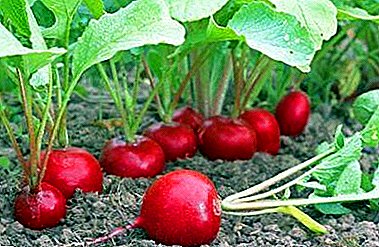 Strawberries Parsley actively scares off slugs, and will be a good thickener for strawberry rows.
Strawberries Parsley actively scares off slugs, and will be a good thickener for strawberry rows.- Tomatoes Parsley suitable fertilizer, which is fed tomatoes. The spice itself improves the taste of tomatoes and repels pests.
- Radish. Radish is used as a lighthouse culture for parsley, which germinates for quite a long time, up to 20 days. Radish grows quickly and it is convenient to navigate on its shoots, where the rows with sown parsley are located.
- Green onions, garlic. Onions and garlic scare away carrots and other insects that infect parsley.
- Potatoes. Parsley discourages the Colorado potato beetle damaging potatoes.
- Asparagus Fragrant spice protects asparagus from insects.
- Carrot. Carrots and parsley get along on the same bed, mutually stimulating each other. During joint planting it is important to take into account that plants are affected by the same pests and diseases, and to carry out preventive measures in a timely manner.
- Cucumbers. Parsley is neutral to cucumbers, but can protect them from slugs. It should be borne in mind that cucumbers do not shade the light-loving parsley.
- Eggplant, pepper, peas, radish, spinach. These crops are also suitable for mixed parsley plantations.
What can not?
- Umbrella. Parsley does not get along with the plants of its kind - cilantro, celery, cumin, dill.
- Cabbage. Parsley can protect cabbage from slugs if it is planted at a sufficient distance along the edge of the bed. But the cabbage itself does not like parsley, therefore it is not worth planting it between the rows.
- Sorrel. Parsley and other spicy herbs badly affect the growth and development of sorrel.
- Cabbage salad. Salad is not friendly with parsley, it is better to avoid this neighborhood.
Parsley grows well along the edge of the beds. So she gets enough sunlight, and her smell protects the main crop from diseases, slugs and ants.
Parsley is friendly to most plants, and does not require much trouble when grown. Spicy aroma frightens off pests, and this makes it a useful companion for neighbors in the garden. Observing the simple rules of parsley compatibility with other crops, it is possible to avoid soil depletion, reduce the incidence of plants, improve the taste and yield of this known spice.


 Strawberries Strawberry is not particularly demanding in care, but has enemies - slugs. Parsley saturates the earth with substances that scare away slugs, and this effect persists for several months after harvesting parsley.
Strawberries Strawberry is not particularly demanding in care, but has enemies - slugs. Parsley saturates the earth with substances that scare away slugs, and this effect persists for several months after harvesting parsley. Strawberries Parsley actively scares off slugs, and will be a good thickener for strawberry rows.
Strawberries Parsley actively scares off slugs, and will be a good thickener for strawberry rows.